León City is on the northwestern side of Nicaragua, bordering the Pacific Ocean. It is 109 meters above sea level. In the beginning of the 17th century, Leon was moved from its original place because of the eruption of Momotombo volcano. Momotombo, Nagarote and Amatitan are some towns outside of Leon City.
Spanish is the language spoken, and the region has a colorful culture, delicious food, popular dances and Catholic traditions, which are celebrated on various days of the year.
Mixed race people prevail in the country since the colonists, and sometimes nature, eliminated the natives of the land.
Typical Rural Home Life
Houses in the region are made of brick with zinc, most of the time with only two divisions and the total size about 42 square meters. The houses are small but have big courtyards where they have the kitchen, shower, bathroom, laundry area and garden; some people have wells.
An average of eight family members live in a house and only one of them has a job. Ladies are in charge of the cooking, cleaning, washing, ironing, children, etc.; the man’s role is to provide.
Local Issues
In these towns there are no open markets, just small shops where no perishable goods can be found. Only Nagarote has a couple of supermarkets. People need to travel to León City or to Managua to do their grocery shopping. A few street vendors sell groceries between 6 and 8 in the morning, but not every day.
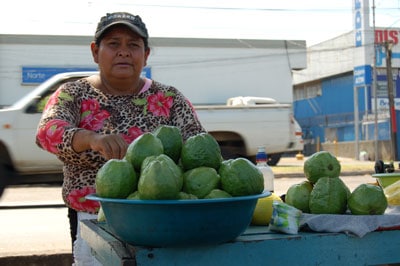
The roads are muddy with many puddles during the rainy season. During the summer it is very dry and dusty. Plantations are on each side of the road and a few houses here and there. People move on bikes, motorcycles, or horses, except for the very few who have a vehicle.
Because of climate changes, crops were lost and people need to find other ways to survive. That’s when someone in the family moves to the urban area, looking for a job.
In other parts of the area, houses are close from each other and schools are more accessible.
Most of the work is agricultural, raising corn or peanuts. In areas close to the lake, fishing is common. Income is very low since most of the time the crops or the fish are sold in very low prices, or they are kept for personal use.
The risks found here are undernourishment and many infectious sicknesses because of poor water quality or much dust. Mainly residents have respiratory and skin problems.
Examples of child development centers in the rural region include:
NI-129, 139, 146, 149, 152, 155, 156, 159, 169, 171, 176-178, 181, 183, 187, 198, 202-204, 206, 208, 210, 214, 215, 221, 224, 227-229, 234, 238, 239, 242, 246, and 249.
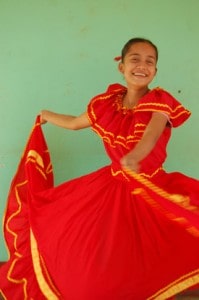
Schools and Education
These towns have their own school(s), although for some children school is too far from their houses so they walk, ride their bikes, ride a horse, or someone takes them on a motorcycle, as it is the case of children in Amatitán.
Normally the school year starts the last week of January or the first week of February and it ends the last week of November. It has a one-week break between semesters in July.
Students go to school in whatever clothes they have available. The last two years, children don’t need to wear uniforms to go to class in all of the country.
There is a need for better school facilities (i.e., chairs, blackboards, repaired roofs, classrooms, and others), and teachers. Some classrooms have up to 50 students and one teacher in the case of elementary school. In high school it is about the same number of students but one teacher per subject.
The school schedule runs from 7 a.m. to 12 p.m. and from 1 p.m. to 5 p.m. Elementary school is only in the morning; high school operates in both schedules.
Transportation available for students is by bike, horse, motorcycle or walking for those whose school is close. In some parts of the rural area, school is about two to six kilometers and sometimes children walk that distance.
Church and Religion
Among the evangelical denominations there is no tension except for two churches from different religious background who do not accept the evangelicals. Other than that there is no problem at all. The percentage of evangelicals in the area is around 25 percent.
Local Dishes
One popular meal, especially on weekends, is steamed maize dumpling with savory filling, wrapped in a banana leaf (nacatamal). Another popular meal is rice and beans (separated or mixed), which is made daily everywhere. Mixed rice and beans is called gallopinto.
Commonly Used Phrases
- Camarón que se duerme, se lo lleva la corriente. (Shrimp that gets sleep is carried by the current.)
- Al mal tiempo, buena cara. (When all else fails, smile.)
- Al que madruga, Dios le ayuda. (The early bird catches the worm.)

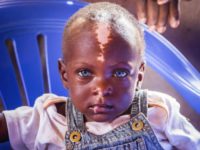
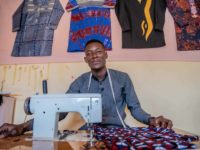

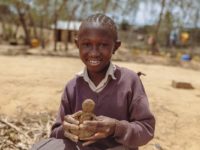


4 Comments |Add a comment
I filled out a form to sponsor a boy in nicaragua. I also submited payments for 3 months. I then book marked the sight so that I could come back to it, but the information was gone. I have not received an E-mail, phone call or any contact at all, and I dont know if I was approved to sponsor this child. How long should I wait for a sponsor package before trying again?
Laura, you should definitely call Compassion. They will be able to advise what happened.
Thank you so much for this post. One of our children lives in rural Nicaragua and this has been so helpful to learn!
Orfa — Muchas gracias for your very good description of life in rural Nicaragua, and for the photos also. It seems very true and gives a good idea of what life is like for many of the families of children that are sponsored there. We’ve been to Nicaragua four times, several times to visit children that we sponsor there (with another program). I would add only two points. Many of the people in rural areas have access to groceries in places other than Leon or Managua (Esteli, for example, or even in smaller villages nearby). Also, although some rural families have a well, many do not and the family — often the child — has to walk a long way to get water every day. And some, sadly, have no electricity.
I don’t mean to criticize what your wrote. It is very, very good and I learned new things from it (for example about the school uniforms). But each time that I’ve been in Nicaragua I’ve been overwhelmed by poverty that still exists — as well as by the beauty of the country, the work of NGOs such as Compassion, and the wonderful friendliness and spirit of Nicaraguans. God bless you for what you are doing.